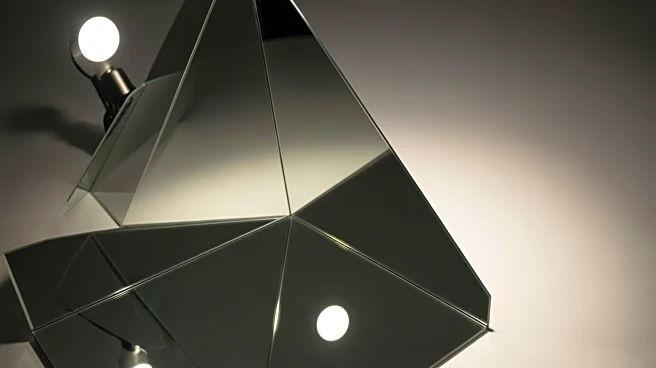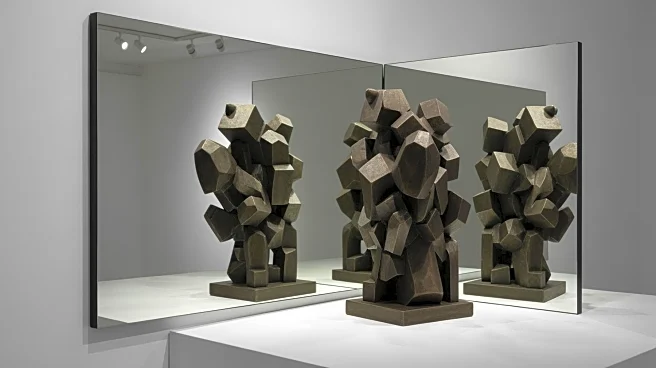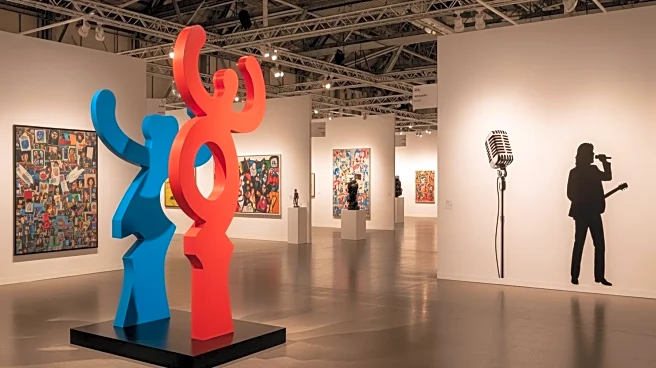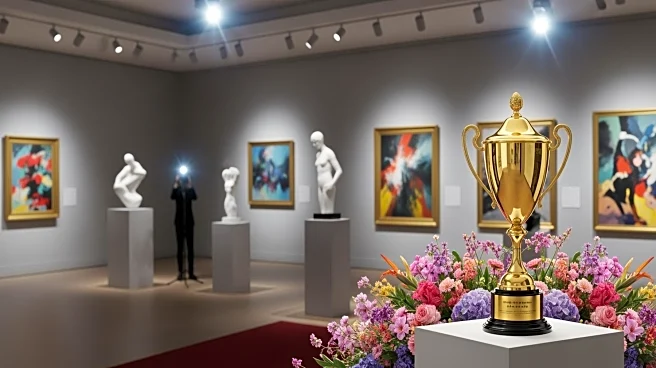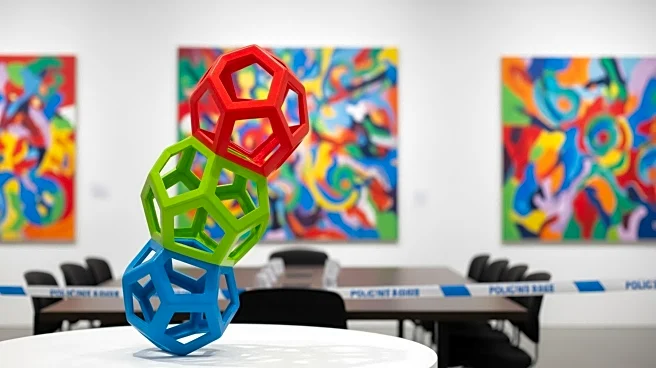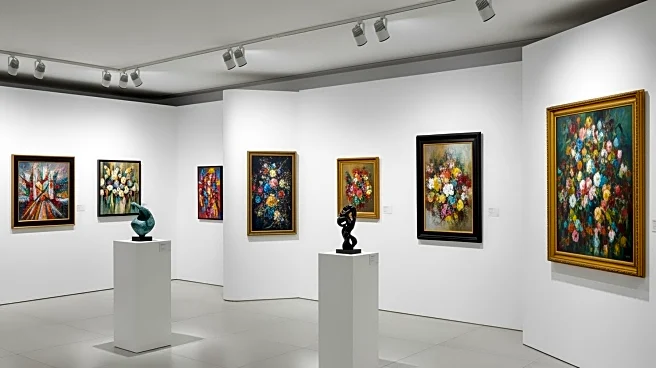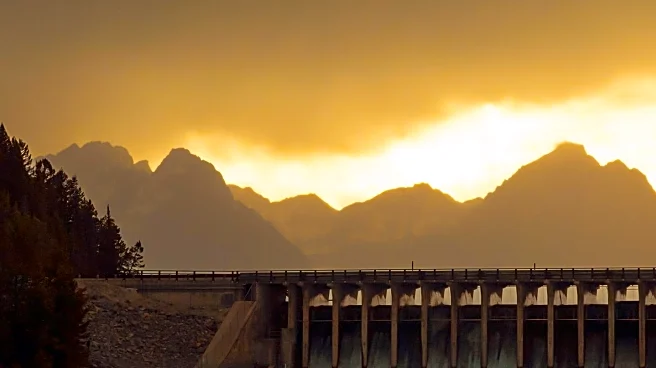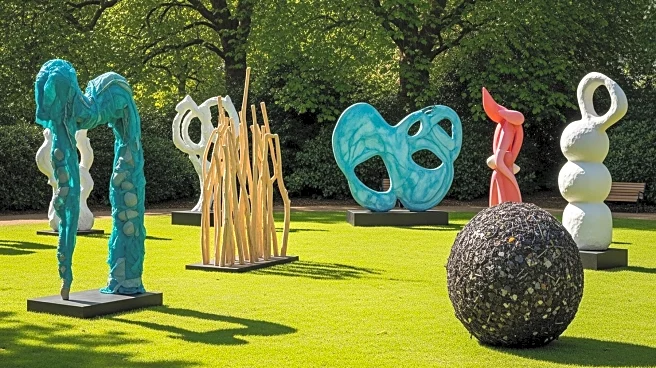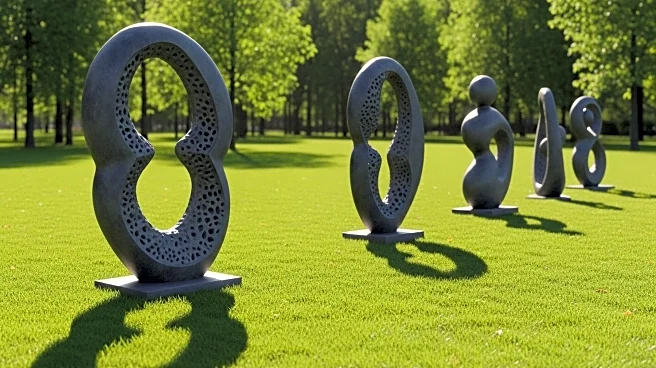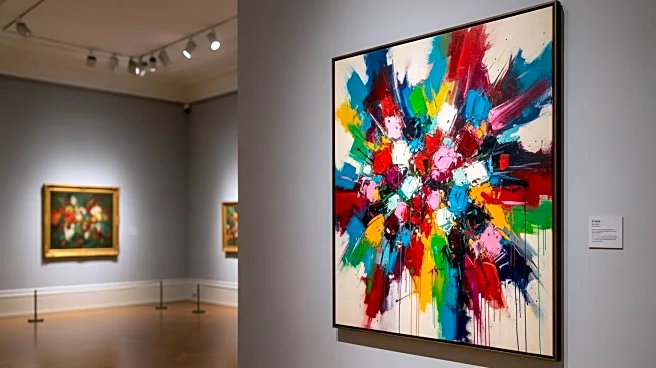What's Happening?
Italian artist Michelangelo Pistoletto, known for his contributions to the Arte Povera movement, is currently showcasing his work at the Helly Nahmad Gallery in London. The exhibition features Pistoletto's
Mirror Paintings alongside Cubist works by Pablo Picasso, highlighting how their revolutionary practices have redefined artistic perspective. Pistoletto, who first introduced his Mirror Paintings in 1963, emphasizes the role of art in reflecting society and reality. He has also been nominated for the Nobel Peace Prize, recognizing his efforts to foster global harmony through creativity.
Why It's Important?
Pistoletto's work and philosophy underscore the potential of art to influence societal change and promote peace. His Mirror Paintings invite viewers to engage with art in a way that includes all of humanity, suggesting a universal understanding of existence. By pairing his work with Picasso's, Pistoletto highlights the historical significance of artistic innovation in challenging traditional perspectives. His nomination for the Nobel Peace Prize further validates the impact of art as a tool for fostering global harmony, emphasizing the responsibility of artists to contribute to societal progress.
What's Next?
Pistoletto plans to launch an exhibition in Monza titled 'UR–RA Unity of Religions—Responsibility of Art for a Preventive Peace,' which will explore the power of art as a tool for peace. This exhibition will feature works from the 1950s onwards, focusing on the artist's connection with spirituality. Additionally, a version of his sculpture 'The Venus of the Rags,' which was destroyed in a suspected arson attack, will be permanently exhibited in Naples, symbolizing the rebirth and regeneration of society.
Beyond the Headlines
Pistoletto's philosophy, known as the 'Third Paradise,' involves a formula of creation that emphasizes the balance between opposing forces, such as war and peace. This concept reflects the ethical dimension of his work, advocating for a society that actively chooses peace over conflict. His approach to art as a means of societal transformation challenges traditional views and encourages a deeper engagement with cultural and spiritual values.
